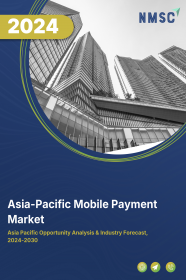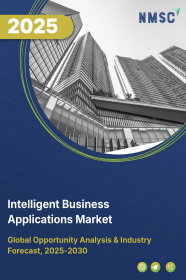
Asia-Pacific Mobile Payment Market by Age (Generation Z, Millennials, Generation X, and Baby Boomers), by Payment Type (Proximity and Remote), and by Application (Money Transfers, Merchandise Purchases, Bill Payments, Airtime Top-ups, Ticketing, and Others) – Opportunity Analysis and Industry Forecast, 2024–2030
Industry: ICT & Media | Publish Date: 01-Sep-2024 | No of Pages: 161 | No. of Tables: 110 | No. of Figures: 75 | Format: PDF | Report Code : IC2470
US Tariff Impact on Asia-Pacific Mobile Payment Market
Trump Tariffs Are Reshaping Global Business
Asia-Pacific Mobile Payment Market Overview
The Asia-Pacific Mobile Payment Market size was valued at USD 50.59 billion in 2023, and is predicted to reach USD 114.42 billion by 2030, with a CAGR of 11.4% from 2024 to 2030. The mobile payment system, also known as money transfer, mobile money, m-payments, electronic payments, and digital payments, enables financial transactions through mobile devices such as smartphones, tablets, and wearables. These transactions occur through mobile apps or various methods such as proximity and remote transactions. Mobile payment systems include various types such as mobile wallets, mobile banking apps, and online payment services such as PayPal, Venmo, and Google Pay.
Utilizing technologies such as SMS, near-field communication (NFC), quick response (QR) codes, and others, these systems ensure smooth transactions while employing robust security measures including encryption and biometric authentication to protect personal and financial data. Praised for their convenience, speed, security, and integration with other financial tools, mobile payment systems experience widespread adoption. Additionally, users can configure payment apps to automatically settle bills, such as utility or credit card bills, ensuring efficient financial management and preventing late payments.
Ease of Use in Mobile Payment Services Drives the Market Growth
Ease of use is one of the key drivers in the mobile payment industry, making platforms more accessible and user-friendly. Simplified interfaces, quick transactions, and robust security features build trust and encourage widespread adoption among both consumers and merchants. Clear support and education further enhance user confidence and ensure a positive experience, fostering long-term engagement and growth in the Asia-Pacific mobile payment market.
Shift Towards Cashless Societies Propel the Market Expansion
The transition towards cashless societies acts as a pivotal catalyst for the Asia-Pacific mobile payment market expansion within the industry in the region. As societies worldwide increasingly embrace digitalization and convenience, cashless payments have emerged as the preferred mode for transactions.
Mobile payment solutions offer consumers and businesses a seamless and efficient alternative to cash, facilitating secure and contactless transactions using smartphones or other mobile devices. The convenience, speed, and hygiene benefits of cashless payments have been particularly highlighted amid global events such as the COVID-19 pandemic, driving further adoption.
Moreover, governments and regulatory bodies actively promote cashless economies to combat issues such as tax evasion, money laundering, and the underground economy. Consequently, the growing acceptance and adoption of cashless payment methods propel market growth for mobile wallet solutions, presenting opportunities for innovation, expansion, and financial inclusion.
Risks Related to Data Breaches and Security Concerns Hamper the Market Expansion
The Asia-Pacific mobile payment market expansion is confronted with significant challenges stemming from risks associated with data breaches and security concerns in the region. As reliance on mobile devices for financial transactions increases, the potential for unauthorized access, data breaches, and identity theft has become a major concern for consumers and businesses. Instances of high-profile security incidents can undermine trust in mobile payment platforms, causing users to hesitate in adopting or continuing to use mobile payment services.
Additionally, regulatory bodies impose stringent requirements for data protection and cybersecurity, adding complexity and costs to mobile payment operations. Addressing these security concerns requires robust encryption, multi-factor authentication, and proactive security measures to instill confidence in mobile banking solutions and drive the market growth.
The Emergence of Real-Time Payment Creates Opportunities in the Market
Real-time payments represent a groundbreaking development in the Asia-Pacific mobile payment market, providing significant opportunities for growth and advancement in the region. These systems facilitate instantaneous fund transfers between parties, delivering unmatched speed and efficiency.
This innovation empowers mobile payment providers to offer seamless and frictionless payment experiences to consumers and businesses. With real-time payments, transactions can be settled instantly, whether it's splitting bills with friends, making retail purchases, or transferring funds between accounts.
Moreover, the integration of real-time payment capabilities into various sectors, such as e-commerce, peer-to-peer lending, and on-demand services, fosters innovation and expands the mobile payment ecosystem. In summary, the emergence of real-time payments revolutionizes payment processing and creates a fertile ground for growth and innovation in the Asia-Pacific mobile payment market.
China Holds a Dominant share in the Market
China dominates the Asia-Pacific mobile payment market share, primarily due to its large population, rapid urbanization, and widespread adoption of mobile technology. The region's booming economy has fueled a surge in consumer spending, with mobile payments emerging as a preferred method for transactions. Companies such as Alipay and WeChat Pay have pioneered mobile payment solutions, offering convenience and security to millions of users.
Additionally, government initiatives promoting digitalization and financial inclusion have further accelerated the growth of mobile wallets in China. The vast market potential, coupled with innovative technology and supportive government policies, solidifies China's position as a leader in the Asia-Pacific mobile payment market.
South Korea is Expected to Show Steady Growth in the Market
South Korea is expected to show steady growth in the Asia-Pacific mobile payment market trends, due to several key factors. Firstly, the region boasts one of the highest smartphone penetration rates globally, providing a solid foundation for the adoption of mobile transaction technologies.
Secondly, South Korea's advanced telecommunications infrastructure and robust internet connectivity facilitate seamless mobile transactions, driving convenience and accessibility for consumers. Moreover, the government's initiatives to promote a cashless society and support the fintech industry further stimulate the growth of mobile payments in the region.
Additionally, South Korea is home to tech-savvy consumers who readily embrace new technologies, contributing to the expanding mobile payment ecosystem. With these favorable conditions in place, South Korea is poised to experience sustained growth in its mobile payment industry, within the Asia-Pacific region.
Competitive Landscape
Various market players operating in the Asia-Pacific mobile payment industry include Alphabet, Inc. (Google), Alibaba Group Holdings Limited, Amazon.com, Inc., Apple, Inc., PayPal Holdings, Inc., Visa, Inc., Tencent Holdings Limited (WeChat), MasterCard International, Inc., Samsung Electronics Co. Ltd., Block, Inc., and others. These key players have adopted various strategies to strengthen their Asia-Pacific mobile payment market share.
Asia-Pacific Mobile Payment Market Key Segments
By Age
-
Generation Z
-
Millennials
-
Generation X
-
Baby Boomers
By Payment Type
-
Proximity
-
Near-Field Communication (NFC)
-
Quick Response (QR) Code Payments
-
-
Remote
-
Internet Payments
-
SMS/Direct Carrier Billing
-
By Application
-
Money Transfers
-
Merchandise Purchases
-
Bill Payments
-
Airtime Top-ups
-
Ticketing
-
Others
By Country
-
China
-
Japan
-
India
-
South Korea
-
Australia
-
Indonesia
-
Singapore
-
Taiwan
-
Thailand
-
Rest of Asia-Pacific
REPORT SCOPE AND SEGMENTATION:
|
Parameters |
Details |
|
Market Size in 2023 |
USD 50.59 Billion |
|
Revenue Forecast in 2030 |
USD 114.42 Billion |
|
Growth Rate |
CAGR of 11.4%from 2024 to 2030 |
|
Analysis Period |
2023–2030 |
|
Base Year Considered |
2023 |
|
Forecast Period |
2024–2030 |
|
Market Size Estimation |
Billion (USD) |
|
Growth Factors |
|
|
Countries Covered |
10 |
|
Companies Profiled |
10 |
|
Market Share |
Available for 10 companies |
|
Customization Scope |
Free customization (equivalent up to 80 working hours of analysts) after purchase. Addition or alteration to region, regional, and segment scope. |
|
Pricing and Purchase Options |
Avail customized purchase options to meet your exact research needs. |
KEY PLAYERS
-
Alphabet, Inc. (Google)
-
Alibaba Group Holdings Limited
-
Amazon.com, Inc.
-
Apple, Inc.
-
PayPal Holdings, Inc.
-
Visa, Inc.
-
Tencent Holdings Limited (WeChat)
-
MasterCard International, Inc.
-
Samsung Electronics Co. Ltd.
-
Block, Inc.

















 Speak to Our Analyst
Speak to Our Analyst





















